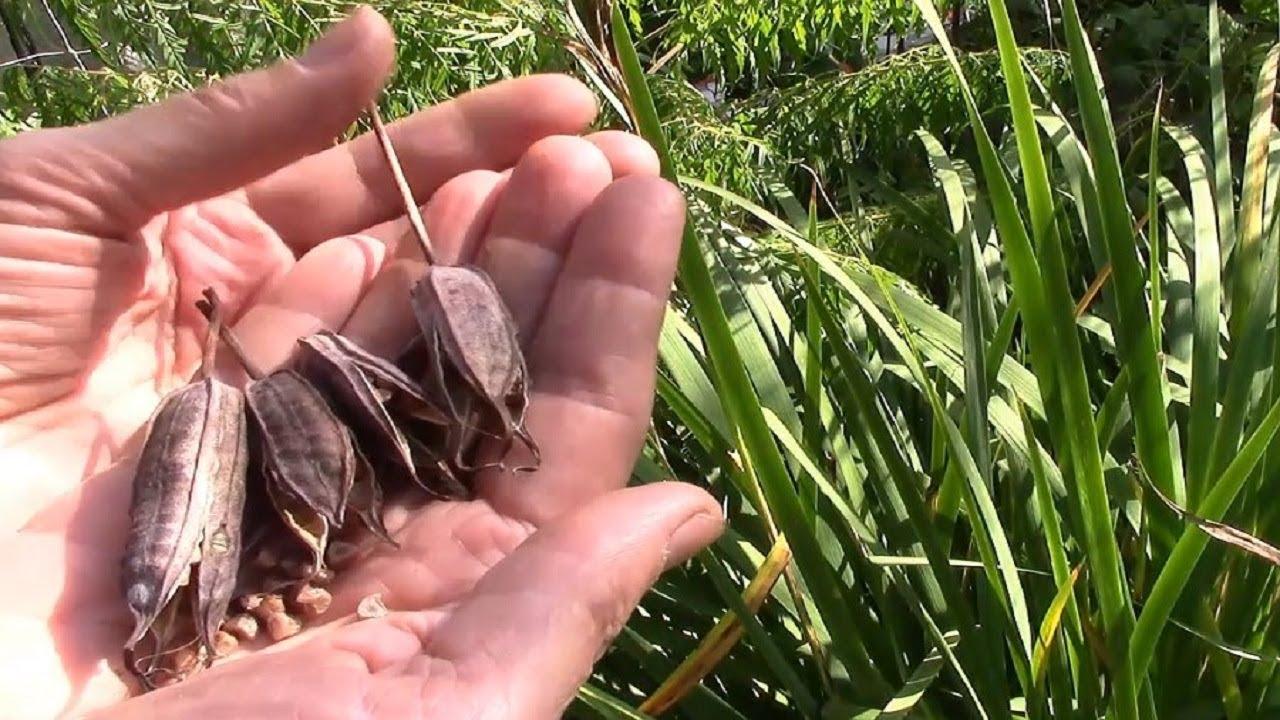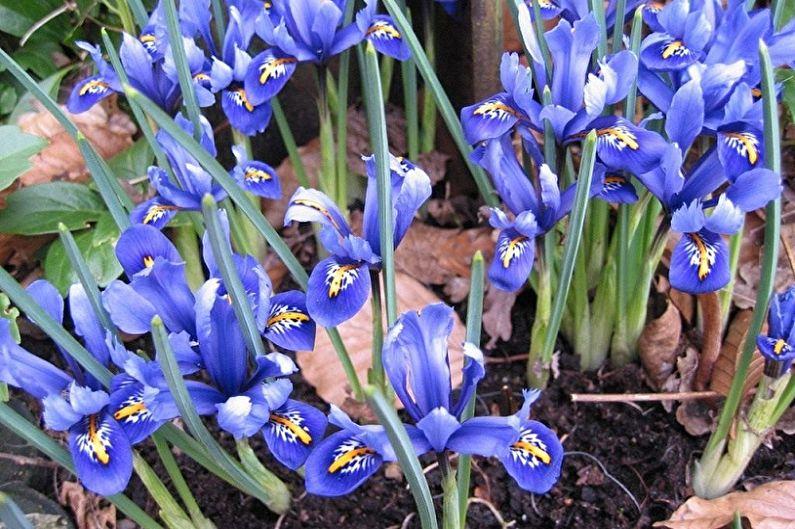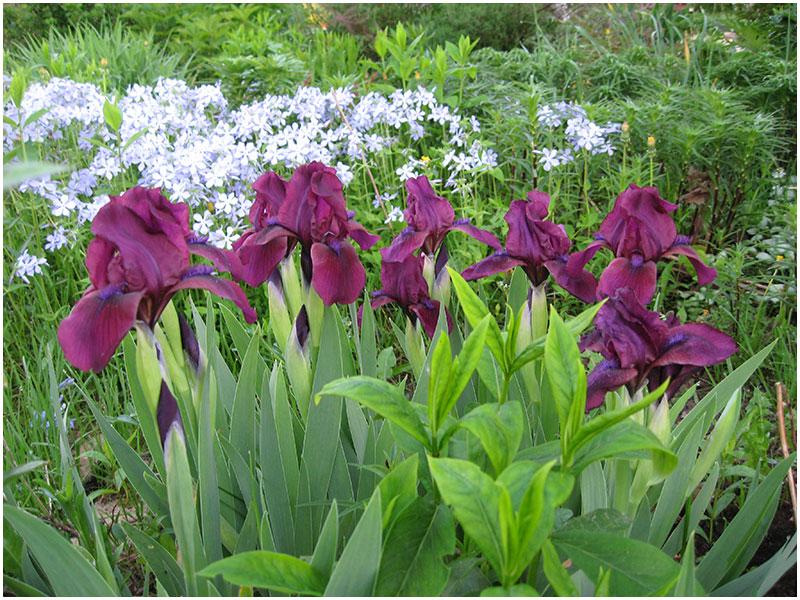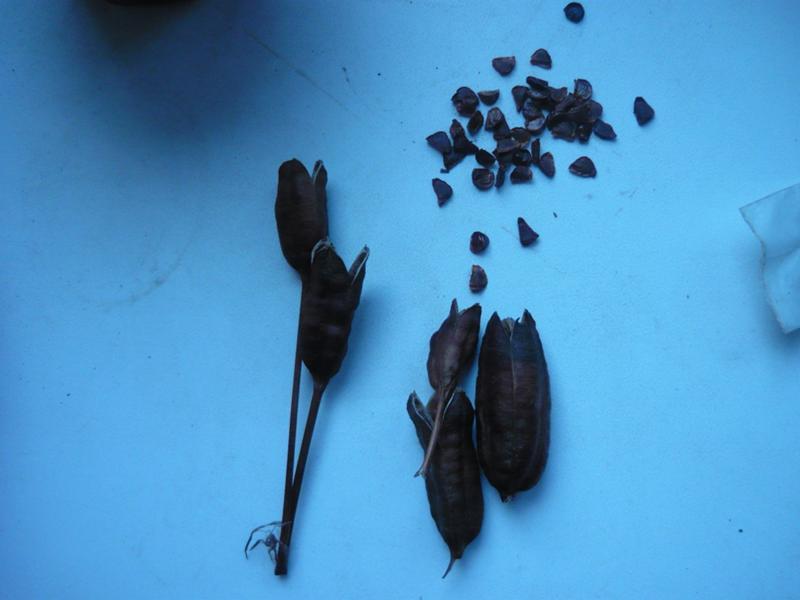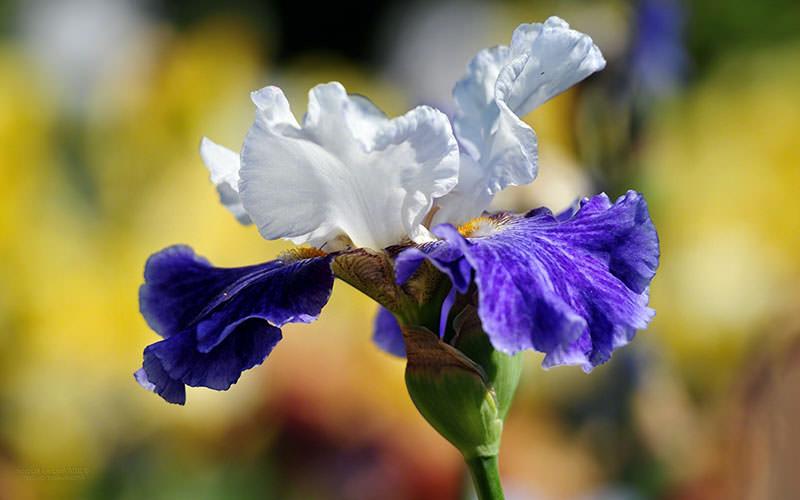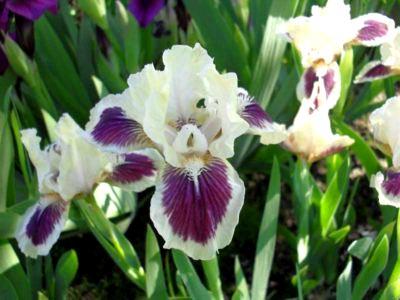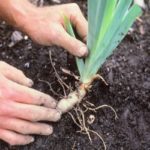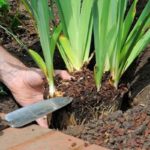Irises are propagated by seeds by true lovers of this flower. They are attracted by the opportunity to obtain their own exclusive varieties. Flowers are pollinated artificially by choosing the specimens you like. Siberian, Japanese, marsh, and varietal irises are propagated by seeds. When propagating from seeds, you have to wait 2-3 years for flowering.
- How do irises reproduce?
- How to grow irises from seeds?
- Selection and preparation of planting material
- Growing time
- Selection and preparation of a landing site
- Sowing seedlings
- Further care
- Transplantation to a permanent place
- Nuances of plant care in open ground
- Watering and fertilizers
- Trimming
- Preparing for winter
- Features of growing at home
How do irises reproduce?
Typically, summer residents resort to vegetative methods of propagating rhizomatous and bulbous varieties of irises. Bulbous varieties (iridodictium, xyphium, juno) are propagated by small bulbs. In summer, overgrown 2-3-year-old nests are dug. After drying, large specimens are stored in the refrigerator until autumn. The babies are immediately placed for rearing.
Rhizomatous varieties of irises are propagated vegetatively (by buds, rhizomes) and by seeds. To obtain especially valuable varieties, buds are used. The washed and dried rhizome is divided into pieces. On each one, 1 bud and several roots are left.
Most often, rhizomatous irises are propagated by dividing the bush. This is done in the fall or spring.
3-4 year old bushes are planted. They are dug out with a shovel or pitchfork. Young 1-2 year old underground shoots are selected for propagation. The division should have several buds and a fan of leaves (5-7 pieces). The tops of the leaves are cut off, leaving 10-15 cm.
The seed propagation method is used by flower growers involved in selection. The ripened seeds are collected immediately after flowering. They are large, formed in triangular fruit boxes. They are sown in open ground in late autumn or spring. They practice growing iris seedlings from seeds at home.
How to grow irises from seeds?
Varietal irises are propagated by seeds. However, the preservation of parental species characteristics is not guaranteed. This is due to the fact that the varieties are obtained by hybridization using different species and, in addition, the flowers can be cross-pollinated by other varieties of irises growing nearby.
Selection and preparation of planting material
Mature iris seeds are large and light brown. They are formed in fruits - three-locular boxes.The fruit is formed after the irises fade. It takes 2-2.5 months for the seeds to ripen. On those bushes that they decided to propagate by seeds, the baskets are left, all the rest are cut off.
When the seeds ripen, the fruit splits. Gardeners put small gauze (tulle) bags on the boxes to prevent the seeds from spilling onto the ground. Dry boxes need to be cut, broken, and the seeds poured into prepared bags. Store in a dark, cool and dry place.
Growing time
Autumn planting takes the least time. Only seeds from the current year are used; last year's seeds are not suitable because germination is low. In autumn you can sow at any time. In those regions where there is weak snow cover, the ridge needs to be covered with leaves, straw or covering material for the winter.
In spring, iris seeds are planted in the ground when the soil warms up to 10-15 °C. Before this they are stratified. You can grow seedlings at home. In this case, stratified iris seeds should be sown in February, and with the onset of warm May days, the seedlings should be transplanted into the garden.
Selection and preparation of a landing site
The flower culture prefers neutral and slightly alkaline soils, loves light, but can grow in light partial shade. Preference should be given to elevated places protected from the wind. Garden soil free of weeds is suitable for irises. When digging, add:
- clay, peat, humus into sandy soil;
- dolomite flour into peat soil;
- river sand, peat, humus into clay soil.
Sowing seedlings
In autumn, the seeds are sown dry. The soil is not watered after planting. The seeds are buried 2 cm. They are planted in rows located at a distance of 25 cm from each other. The planting step is 10 cm. The bed is covered with 2 layers of lutrasil for the winter.When planting in spring, the soil is watered and the seeds are placed in furrows when it settles.
Further care
In spring, shoots appear. Caring for them is easy. It is necessary to regularly remove weeds and loosen the soil shallowly. Pulled weeds can be left between rows. They will protect the soil from drying out. You need to water the seedlings in the morning before 11 o'clock. Water should not get on the leaves. Before transplanting to a permanent location, seedlings can be fed with complex fertilizer “Kemira Lux” or “Kemira Universal”. To prevent pests, sprinkle the soil with sifted ash after watering.
Transplantation to a permanent place
A week before transplanting irises, prepare the area. The soil is dug up to a depth of 25-30 cm, for each square meter of ridge add 8-10 kg of humus, 2 tbsp. l. superphosphate, 2 tbsp. ash. If the acidity is high, add dolomite flour.
You can plant seedlings in a permanent place after the appearance of the 3rd leaf. The bushes are dug up with a clod of earth and planted in prepared holes. Planting schemes used:
- step 60 cm for tall varieties;
- 40 cm for medium-sized children in mixborders;
- 25 cm for dwarf irises.
Nuances of plant care in open ground
Care for adult specimens is minimal. Hobbyists grow 100 of them in their gardens. With the right choice of location and planting, the perennial blooms profusely and annually.
Watering and fertilizers
In the absence of rain, moisten once a week. Swamp varieties like abundant and more frequent watering. They can grow in water. Organic matter in the form of fresh manure cannot be used as fertilizer. For a perennial, 3 fertilizings with any complex fertilizer for flowering plants are enough per season.
Trimming
Flowering begins in spring.With a large number of varieties, it continues until mid-summer. They maintain the decorative appearance of the flower garden by trimming faded flower stalks. They are cut at the level of the leaves. Yellow leaves are cut near the ground.
Preparing for winter
The leaves are cut at a height of 15 cm from the ground, creating a fan of leaves. The soil is sprinkled with ash and covered with leaves or spruce branches. Organic mulch is a good replacement for any purchased covering material.
Features of growing at home
Iris seeds have a rough shell. So that the sprout can break through it, stratification is carried out:
- take a disposable plastic container with a lid and a piece of cloth (gauze);
- the fabric is moistened, the seeds are wrapped in it, and placed in a container;
- The container is placed in the refrigerator for 2 months;
- the fabric is occasionally moistened.
In February, stratified iris seeds are sown for seedlings. Planted in a common container 15-20 cm high or in separate cups. Sprout in fertile garden soil or a mixture of peat and sand. Some gardeners germinate seeds in orchid substrate. The seeds are buried 1.5-2 cm. After a week, shoots appear.
In spring, the days are short, so cups with iris seedlings are placed under a lamp and the seedlings are illuminated in the morning and evening. The soil is moistened moderately. Irises do not like waterlogging. Before transplanting into the ground, seedlings are fed with complex fertilizer. In May-June, seedlings can be planted in open ground.

